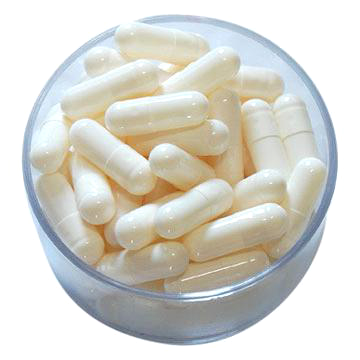Popular Articles
Arthritis and ChondroitinIn This Article
Chondroitin gives structure to the cartilage. It is one of the few arthritis solutions that can help rebuild the cartilage and reverse some of the damage done to the joints.
Arthritis refers to several related joint disorders that involve inflammation and pain. Of the more than 100 types of arthritis, the most common ones are osteoarthritis, rheumatoid arthritis, gout arthritis, septic arthritis, and psoriatic arthritis. Joint pain is the main complaint of arthritis. The degeneration of joint tissue causes this pain as a result of disease, inflammation, or regular straining of the joint muscles. Besides pain and inflammation, stiffness and restriction in movement are the other features of all forms of arthritis. Although arthritis can affect people of all ages, it mostly affects the elderly. It also affects women more than men. Arthritis is the most common cause of disability worldwide. Because it reduces the range of motion and the extent of movement of those it affects, arthritis may trigger other health complications such as obesity, heart disease, and depression. OsteoarthritisOsteoarthritis is the most common form of arthritis. It is caused by the result of daily wear and tear of joints, which shows with age, although it may also be a result of injury to the joint. Osteoarthritis affects the joints that bear the body’s weight and this means that it can be caused and worsened by obesity and a sedentary lifestyle. It usually worsens after exercising. Osteoarthritis is usually situated at the pelvic, back, and spine joints. It also affects post-menopausal women more than men or younger women. Treatment options for osteoarthritis include pain relievers to reduce pain, physical therapy to improve muscular strength and flexibility of the joints, and surgery if the joints are too bad to respond to conventional treatments. Rheumatoid ArthritisIn rheumatoid arthritis, the cartilage is eroded by an autoimmune attack rather than daily wear and tear. Therefore, rheumatoid arthritis can affect people of all ages. It is mostly situated at the joints of the fingers, wrists, elbows, and knees. Therefore, it causes stiffness in these joints and may cause deformities if left untreated. The pain and stiffness of rheumatoid arthritis are at their worst in the morning. Early diagnosis and treatment of rheumatoid arthritis can produce remarkable results. The drugs of choice are corticosteroids to reduce joint inflammation and monoclonal antibodies to reduce the autoimmune attack causing the degeneration of the joints. Gouty ArthritisGouty arthritis involves the deposition of crystals of uric acid in the joints of the toe, ankles, knees, and elbows. Thus, causing pain and inflammation and may lead to the crippling of the limb attached to the joint. What is Chondroitin?Chondroitin is one of the drug options used in the treatment of osteoarthritis. Compared to conventional arthritis medications such as corticosteroids and non-steroidal anti-inflammatory drugs (NSAIDs), chondroitin produces lesser side effects and is safe for long-term treatment. Chondroitin is part of a proteoglycan that gives structure to cartilage. It is a glycosaminoglycan that is capable of binding to structural proteins. Basically, chondroitin is a family of sulfated sugars of varying lengths. The sugars making up the structure of chondroitin are the monosaccharides, D-glucuronic acid, and N-acetyl-D-galactosamine. These sugars are alternated into straight, unbranched polysaccharides of different lengths. Each sugar in the chain can be left without a sulfate group or with one or two sulfate groups attached. Chondroitin sulfate is one of a group of proteoglycans called aggrecan. Aggrecans, such as chondroitin sulfate, aggregate together tightly but are highly charged. Because they carry the same electrical charge, chondroitin molecules generate electrostatic repulsion, which provides a force of resistance in the cartilage of the joint against compression. This repulsive force is responsible for the cushioning effect of the cartilage. Besides its structural function, chondroitin also plays a regulatory role in the central nervous system. In the brain, it helps stabilize the synapses of the neurons. It is also produced in increased amounts after an injury to the central nervous system to protect the damaged nerve endings. However, the chief medical use of chondroitin is to treat osteoarthritis by contributing to the structural repair of the cartilages. How Chondroitin Works for ArthritisDifferent studies have identified the therapeutic benefits of chondroitin in the treatment of osteoarthritis, especially when arthritis affects the hip or knees. The efficacy of chondroitin is further improved when combined with glucosamine.
Researchers have determined that chondroitin sulfate has multiple mechanisms of action in the treatment of osteoarthritis. There are three main ways chondroitin provides relief for the pain and swelling associated with this degenerative disease. First, chondroitin has been shown to have anti-inflammatory activity, especially at the joints. At the same site, it promotes the synthesis of proteoglycans and hyaluronic acid. When taking chondroitin orally, it can stimulate the production of new chondroitin to strengthen the cartilages of the joint. Lastly, chondroitin reduces the destructive action of chondrocytes. To do this, it inhibits the production of nitric oxide, enzymes that split structural proteins into peptides, and other substances known to kill off chondrocytes and damage the cartilage. Chondroitin sulfate inhibits the relocation of a specific nuclear factor (nuclear factor-kB) in the chondrocytes to protect the chondrocytes from self-destruction. Chondroitin: Supplement, Drug & SafetyIn the US, chondroitin is sold as a dietary supplement. However, in other countries, especially in Europe, chondroitin sulfate is recognized as an osteoarthritis drug and classified as a slow-acting medication to relieve the symptoms of the disease. Chondroitin: Drug or SupplementWhile chondroitin is sold in the US as a dietary supplement, it qualifies as a drug in some other countries, especially in Europe.
However, since chondroitin is a family of glycosaminoglycans with varying chains, it is difficult to standardize. A survey of the chondroitin sold in the market found that their chondroitin contents vary widely from 40% to 400% of the labeled amounts. This variance is possible because where chondroitin is classified as a food supplement, it is manufactured according to the Good Manufacturing Practices (GMP) for food supplements and not according to the stricter GMP for pharmaceuticals. Even then, chondroitin is considered very safe. With only mild side effects reported and its long-term safety shown, chondroitin rates as one of the safest drugs for osteoarthritis in Europe. Why Chondroitin Is SafeA committee of the European League Against Rheumatism (EULAR) tasked with investigating the toxicity of chondroitin recently assigned it a score of 6 on a toxicity scale of 0 – 100, where 0 refers to no toxicity. This means that chondroitin is very safe even in large doses and in the long-term treatment of osteoarthritis. This is a remarkable result given the multiple mechanisms of action ascribed to chondroitin. However, chondroitin has an even more remarkable property: it is not metabolized by cytochrome P450. Cytochrome P450 is a big family of enzymes found in animals, plants, and microorganisms. In humans, this superfamily of enzymes is responsible for 75% of drug metabolism. Therefore, it is the root cause of drug-drug interactions. Cytochrome P450 can activate or deactivate a drug molecule by metabolizing it. Drugs can also modify their activities. The serum level of the second drug will then rise above therapeutic values to produce toxic reactions. Since chondroitin is unaffected by cytochrome P450 enzymes, it is largely free of drug-drug interactions. Therefore, unless chondroitin is abused, it cannot produce toxic reactions. Also, it does not affect the effectiveness of other drugs. This second effect is the reason chondroitin is considered the safest osteoarthritis drug for patients treated for other diseases such as diabetes and hypertension. No other osteoarthritis drug is considered a safe and better alternative to chondroitin. However, there is an exception to this ability of chondroitin to be free of drug-drug interactions. This exception is the concurrent use of both blood thinners and chondroitin. Drugs Chondroitin AffectChondroitin is structurally similar to anticoagulants such as warfarin and heparin. Therefore, it may increase their ability to block blood clotting. This effect is observed, especially when chondroitin is combined with glucosamine. In theory, it may worsen bleeding and bruising. Therefore, chondroitin should not be recommended for people who are placed on blood thinners. A similar effect is possible with non-steroidal anti-inflammatory drugs or NSAIDs such as ibuprofen. Because chondroitin also reduces pain due to osteoarthritis, patients receiving NSAIDs should be given a lower dose of those painkillers. This is beneficial because concurrent administration of both drugs means that NSAIDs will produce lesser side effects, given that their doses are lower. In both cases of drug interaction, chondroitin does not modify the effect of the second drug. All it does is produce a similar effect. For anticoagulants, that effect is unwanted, but for NSAIDs, it is welcome. Possible Side Effects of ChondroitinChondroitin produces no serious side effects and far fewer side effects than regular osteoarthritis drugs.
Other side effects are rarely reported, and some are even theoretical. These other side effects include skin reactions such as rash, hives and photosensitivity, headaches, hair loss, pedal edema, puffy eyes, high blood pressure, chest pain, bone marrow depression, and increased risk of bleeding. These are uncommon side effects and will require that you consult your doctor if they present. Because some chondroitin products in the market contain excess manganese, it is possible to develop manganese toxicity from these products. Therefore, you should avoid chondroitin products with added manganese. Given that the safety profile of chondroitin during pregnancy and lactation is not well studied, it is best for pregnant and breastfeeding mothers to avoid it. An early study indicates a possible link between prostate cancer and chondroitin. However, this is not taken as definitive proof, especially given that no such case has been reported in the years since chondroitin sulfate supplements have been used for treating osteoarthritis. Still, prostate cancer patients and those with a genetic predisposition for developing the disease should avoid chondroitin until further studies clarify the link. Allergic Reactions to ChondroitinSince chondroitin is a sugar-protein compound of animal origins, it may trigger an immune response in the form of an allergic reaction. This allergic reaction is most likely due to the animal proteins present as contaminants in chondroitin.
Symptoms of allergic reactions to chondroitin include hives, difficulty breathing, chest tightness, blockage of the throat, and swollen face, lips, and tongue. These symptoms require immediate treatment and should be treated as medical emergencies. Oversulfated Chondroitin SulfateIn 2008, the first case of oversulfated chondroitin sulfate was reported by the FDA. This new compound was found as a contaminant in heparin imported from China. Oversulfated chondroitin sulfate is chemically different from chondroitin sulfate, and it has a different set of biological activities too. For example, each sugar unit of this contaminant molecule carries 3 or 4 sulfate groups. A quick examination also found out that oversulfated chondroitin sulfate is a product of laboratory synthesis rather than a compound of biological origin. Oversulfated chondroitin sulfate produces some serious side effects, including hypotension. These side effects are not observed with chondroitin sulfate. Currently, oversulfated chondroitin sulfate has only been discovered in contaminated heparin. However, since it is a product of deliberate synthesis, some dubious foreign dietary supplement manufacturers may sell it or a similar metabolite as chondroitin sulfate. Given its remarkably different biological activities, oversulfated chondroitin sulfate does not serve as a substitute for chondroitin sulfate, nor is it safe. Therefore, you should make sure to get chondroitin sulfate from a good brand. |
|||||
| Next Article: How to Stop Arthritis |





 The chondroitin sulfate sold as supplements and drugs is obtained from animal sources. The extracts of the cartilaginous tissues of cows and pigs are the most common sources. Other animals from which chondroitin is extracted are birds, fish, and sharks.
The chondroitin sulfate sold as supplements and drugs is obtained from animal sources. The extracts of the cartilaginous tissues of cows and pigs are the most common sources. Other animals from which chondroitin is extracted are birds, fish, and sharks. The most commonly reported side effects of chondroitin relate to gastrointestinal upset include stomach pain, nausea, gas, diarrhea, and constipation. These gastrointestinal side effects are mostly observed at high doses of chondroitin, usually at and above 10 g per day.
The most commonly reported side effects of chondroitin relate to gastrointestinal upset include stomach pain, nausea, gas, diarrhea, and constipation. These gastrointestinal side effects are mostly observed at high doses of chondroitin, usually at and above 10 g per day. The allergic reaction to chondroitin is most likely to occur in people with asthma. Chondroitin may worsen a well-controlled case of asthma. Therefore, it should be used with caution by asthmatics and only under the supervision of a doctor.
The allergic reaction to chondroitin is most likely to occur in people with asthma. Chondroitin may worsen a well-controlled case of asthma. Therefore, it should be used with caution by asthmatics and only under the supervision of a doctor.